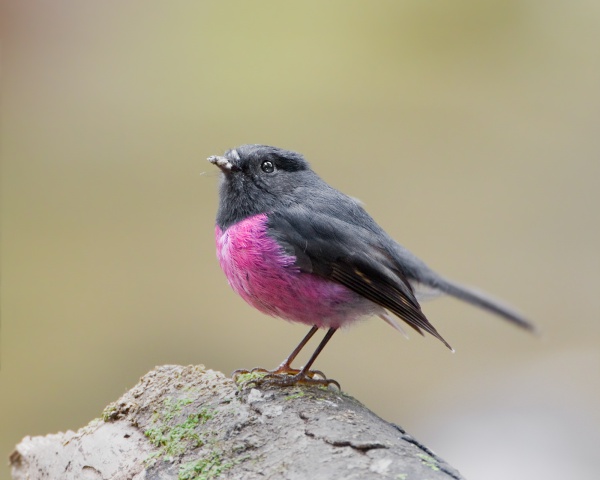Facts About Pink robin
The pink robin is a captivating small bird native to southeastern Australia. As members of the Petroicidae family, these birds are notable for their striking sexual dimorphism. Males display a vibrant pink breast and a distinctive white spot on their forehead, while females feature more subdued grey-brown plumage. Measuring about 13.5 cm in length, pink robins typically inhabit the cool temperate forests of southeastern Australia.
Despite their name, pink robins are not related to the European or American robins. They belong to an early branch of the Passerida group of songbirds. The pink robin was first described by Belgian naturalist Auguste Drapiez in 1819. Within the Australasian robin family, their closest relative is the rose robin. The genus name "Petroica" is derived from Ancient Greek, meaning 'stone' and 'house', while "rodinogaster" translates to 'pink belly.'
Pink robins breed from September to January, building nests in tree forks up to 5 meters above the ground. These nests are constructed from materials such as moss, spider webs, feathers, and fur. Typically, a clutch contains three to four eggs, which are greyish, greenish, or bluish-white with dark brown and lavender markings. Their diet mainly consists of insects and spiders, including caterpillars, wasps, beetles, flies, and ants.
You can find pink robins in the forests of southern Victoria, South Australia, New South Wales, and Tasmania. With their unique appearance and vibrant colors, these birds add a splash of beauty to the diverse ecosystems of southeastern Australia.
